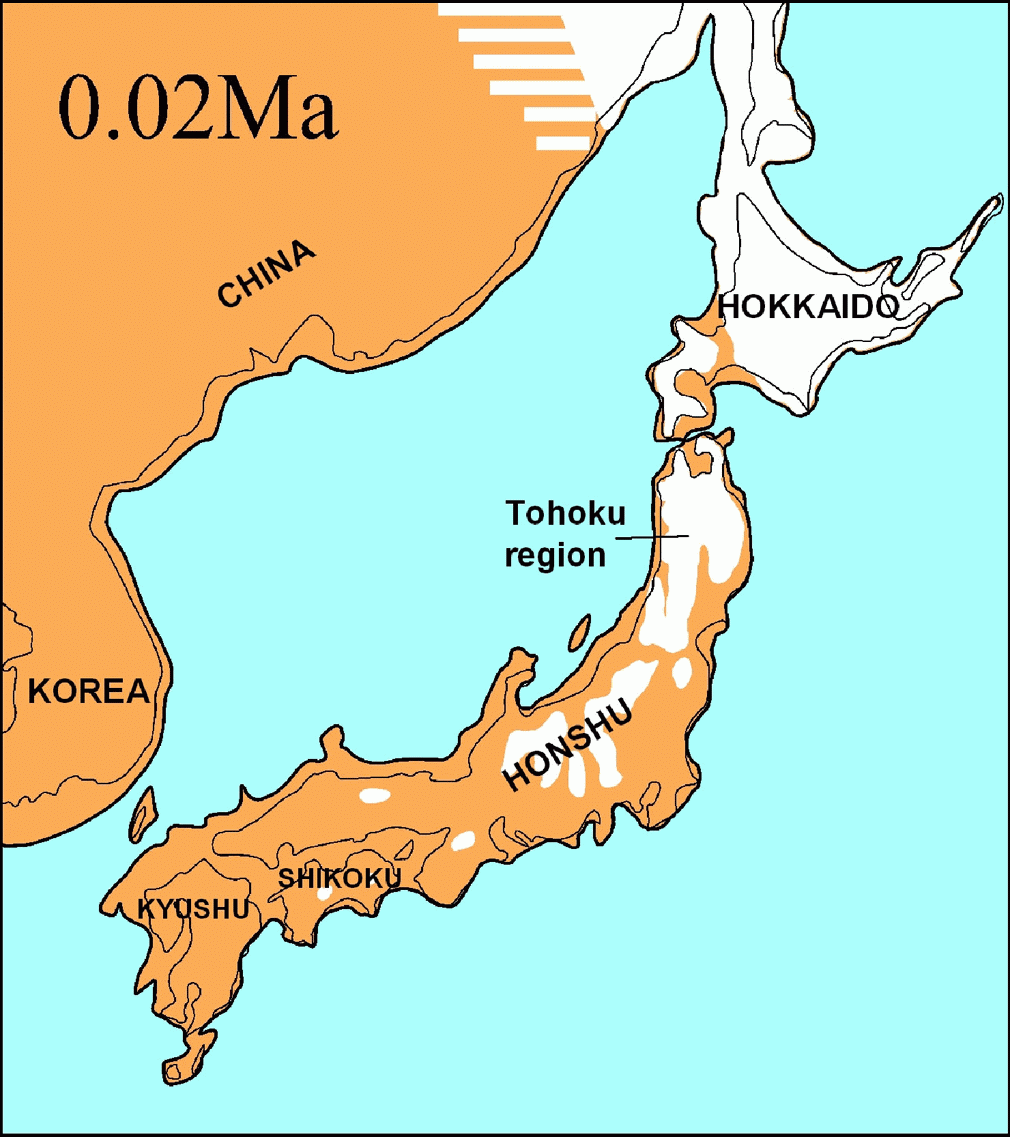|
Burakumin
The are a social grouping of Japanese people descended from members of the feudal class associated with , mainly those with occupations related to death such as executioners, gravediggers, slaughterhouse workers, butchers, and tanners. Burakumin are physically indistinguishable from other Japanese but have historically been regarded as a socially distinct group. When identified, they are often subject to discrimination and prejudice. , there were an estimated 3 million ''burakumin'' living in the country, mostly in western Japan. During Japan's feudal era, these occupations acquired a hereditary status of oppression, and later became a formal class within the class system of the Edo period (1603–1868). The stratum immediately below merchants comprised the '' hinin'' (literally "non-persons"), and below them the ''eta'' ("great filth"), who were together known as the ''senmin'' ("base people"). They were subject to various legal restrictions, such as being forced to live i ... [...More Info...] [...Related Items...] OR: [Wikipedia] [Google] [Baidu] |
Kenji Nakagami
was a Japanese novelist and essayist. He is well known as the first, and so far the only, post-war Japanese writer to identify himself publicly as a Burakumin The are a social grouping of Japanese people descended from members of the feudal class associated with , mainly those with occupations related to death such as executioners, gravediggers, slaughterhouse workers, butchers, and tanners. Bura ..., a member of one of Japan's long-suffering outcaste groups. His works depict the intense life-experiences of men and women struggling to survive in a Burakumin community in western Japan. His most celebrated novels include ''Misaki'' (''The Cape''), which won the Akutagawa Prize in 1976, and ''Karekinada'' (''The Sea of Withered Trees''), "Chapter Three considers Nakagami's masterpiece, the Akiyuki trilogy. Rather than the better known 1976 and 1977 works, 'Misaki' (The Cape) and Kareki nada (The Sea of Withered Trees), close attention is given to Chi no hate shijo no toki (198 ... [...More Info...] [...Related Items...] OR: [Wikipedia] [Google] [Baidu] |
Hinin
''Hi-nin'' (kanji: , hiragana: ; ) was an outcast group (''burakumin'') in ancient Japan, more specifically the Edo Period of Japanese history (1603–1868). ''Hinin'' and ''Eta'' () consisted of the lowest social classes in ancient Japan, but were not considered part of the social hierarchy. ''Hinin'' were forced to do "polluting" activities such as begging, street performing, and burying the bodies of people who had been executed. ''Eta'' directly translates to "polluted ones" and was closely intertwined with the ''Hinin'' social class. Both phrases were used for those deemed to be separate from society with a few minor distinctions between them. The occupations of those who were called ''Eta'' were mostly skinning animals and tanning. These jobs were associated with sinning due to the heavy practice of Buddhism and Shinto in Edo Japan, thus those who did these jobs were considered to be filled with sin and therefore "polluted." History Hinin could be adopted by poor commo ... [...More Info...] [...Related Items...] OR: [Wikipedia] [Google] [Baidu] |
Buraku Liberation League
is a burakumin's Human rights, rights group in Japan. Buraku are ethnic Japanese people, Japanese and descended from outcast communities of the Japanese feudal era. History Pre-World War II period The origin of the Buraku Liberation League is the , founded in 1922. However, in 1942, some of the leading activists, including Asada Zennosuke (朝田善之助), were recruited into the military. The National Levelers Association disbanded in the same year. Post-World War II period In 1946, the ex-members of the National Levelers Association formed the . In 1955, it was renamed the Buraku Liberation League (BLL). In 1966, one of the leaders, , died. Around the same time, the BLL purged the members who were against the leaders' decision that the subsidy to the burakumin should be limited to the BLL members only (as there are many burakumin who did not join the BLL). Asada played a major role in this purge. Thus, the ex-members of the BLL formed the in 1970. This was the predecessor ... [...More Info...] [...Related Items...] OR: [Wikipedia] [Google] [Baidu] |
Hinin
''Hi-nin'' (kanji: , hiragana: ; ) was an outcast group (''burakumin'') in ancient Japan, more specifically the Edo Period of Japanese history (1603–1868). ''Hinin'' and ''Eta'' () consisted of the lowest social classes in ancient Japan, but were not considered part of the social hierarchy. ''Hinin'' were forced to do "polluting" activities such as begging, street performing, and burying the bodies of people who had been executed. ''Eta'' directly translates to "polluted ones" and was closely intertwined with the ''Hinin'' social class. Both phrases were used for those deemed to be separate from society with a few minor distinctions between them. The occupations of those who were called ''Eta'' were mostly skinning animals and tanning. These jobs were associated with sinning due to the heavy practice of Buddhism and Shinto in Edo Japan, thus those who did these jobs were considered to be filled with sin and therefore "polluted." History Hinin could be adopted by poor commo ... [...More Info...] [...Related Items...] OR: [Wikipedia] [Google] [Baidu] |
Edo Society
Edo society refers to the society of Japan under the rule of the Tokugawa Shogunate during the Edo period from 1603 to 1868. Edo society was a feudal society with strict social stratification, customs, and regulations intended to promote political stability. The Emperor of Japan and the were the official ruling class of Japan but had no power. The of the Tokugawa clan, the , and their Affinity (medieval), retainers of the samurai class administered Japan through their Han system, system of domains. The majority of Edo society were commoners divided into peasant, Artisan, craftsmen, and merchant classes, and various "Untouchability, untouchable" or Burakumin groups. The Tokugawa shogunate ruled by dividing the people into four main categories. Older scholars believed that there were of "samurai, peasants (''hyakushō''), craftsmen, and merchants" (''chōnin'') under the daimyo, with 80% of peasants under the 5% samurai class, followed by craftsmen and merchants. However, var ... [...More Info...] [...Related Items...] OR: [Wikipedia] [Google] [Baidu] |
Tokugawa Period
The , also known as the , is the period between 1600 or 1603 and 1868 in the history of Japan, when the country was under the rule of the Tokugawa shogunate and some 300 regional ''daimyo'', or feudal lords. Emerging from the chaos of the Sengoku period, the Edo period was characterized by prolonged peace and stability, urbanization and economic growth, strict social order, Isolationism, isolationist foreign policies, and popular enjoyment of Japanese art, arts and Culture of Japan, culture. In 1600, Tokugawa Ieyasu prevailed at the Battle of Sekigahara and established hegemony over most of Japan, and in 1603 was given the title ''shogun'' by Emperor Go-Yōzei. Ieyasu resigned two years later in favor of his son Tokugawa Hidetada, Hidetada, but maintained power, and defeated the primary rival to his authority, Toyotomi Hideyori, at the Siege of Osaka in 1615 before his death the next year. Peace generally prevailed from this point on, making samurai largely redundant. Tokugawa sh ... [...More Info...] [...Related Items...] OR: [Wikipedia] [Google] [Baidu] |
Hiromu Nonaka
was a Japanese politician of the Liberal Democratic Party. Nonaka served as a local politician in Kyoto Prefecture from 1951 to 1978 and in the House of Representatives from 1983 to 2003, becoming one of its most prominent members in the 1990s. Nonaka served as Minister of Home Affairs and Head of the National Public Safety Commission from 1994 to 1995, as Chief Cabinet Secretary from 1998 to 1999, and as Head of the Okinawa Development Agency in 1999. Nonaka was widely considered as a voice of reason within the Liberal Democratic Party and viewed by some as the most powerful person in Japan during the mid-to-late 1990s. Early life and local political career Hiromu Nonaka was born on 20 October 1925 in Sonobe, Kyoto Prefecture (now part of the city of Nantan) into a family of ''burakumin'' background. After graduating from Kyoto Prefectural Sonobe Junior High School in 1943, Nonaka worked for the Japanese National Railways (JNR) in Osaka, an office managed at the time by f ... [...More Info...] [...Related Items...] OR: [Wikipedia] [Google] [Baidu] |
Japanese People
are an East Asian ethnic group native to the Japanese archipelago. Japanese people constitute 97.4% of the population of the country of Japan. Worldwide, approximately 125 million people are of Japanese descent, making them list of contemporary ethnic groups, one of the largest ethnic groups. Approximately 120.8 million Japanese people are residents of Japan, and there are approximately 4 million members of the Japanese diaspora, known as . In some contexts, the term "Japanese people" may be used to refer specifically to the Yamato people, who are primarily from the historically principal islands of Honshu, Kyushu and Shikoku and constitute by far the largest group. In other contexts, the term may include other groups native to the Japanese archipelago, including Ryukyuan people, who share connections with the Yamato but are often regarded as distinct, and Ainu people. In recent decades, there has also been an increase in the number of people with both Japanese and non-Japanes ... [...More Info...] [...Related Items...] OR: [Wikipedia] [Google] [Baidu] |
Yakuza
, also known as , are members of transnational organized crime syndicates originating in Japan. The Japanese police and media (by request of the police) call them , while the yakuza call themselves . The English equivalent for the term ''yakuza'' is gangster, meaning an individual involved in a Mafia-like criminal organization. The yakuza are known for their strict codes of conduct, their organized fiefdom nature, and several unconventional ritual practices such as '' yubitsume'', or amputation of the left little finger. Members are often portrayed as males with heavily tattooed bodies and wearing '' fundoshi'', sometimes with a kimono or, in more recent years, a Western-style "sharp" suit covering them. At their height, the yakuza maintained a large presence in the Japanese media, and they also operated internationally. In 1963, the number of yakuza members and quasi-members reached a peak of 184,100. [...More Info...] [...Related Items...] OR: [Wikipedia] [Google] [Baidu] |
Edo Period
The , also known as the , is the period between 1600 or 1603 and 1868 in the history of Japan, when the country was under the rule of the Tokugawa shogunate and some 300 regional ''daimyo'', or feudal lords. Emerging from the chaos of the Sengoku period, the Edo period was characterized by prolonged peace and stability, urbanization and economic growth, strict social order, Isolationism, isolationist foreign policies, and popular enjoyment of Japanese art, arts and Culture of Japan, culture. In 1600, Tokugawa Ieyasu prevailed at the Battle of Sekigahara and established hegemony over most of Japan, and in 1603 was given the title ''shogun'' by Emperor Go-Yōzei. Ieyasu resigned two years later in favor of his son Tokugawa Hidetada, Hidetada, but maintained power, and defeated the primary rival to his authority, Toyotomi Hideyori, at the Siege of Osaka in 1615 before his death the next year. Peace generally prevailed from this point on, making samurai largely redundant. Tokugawa sh ... [...More Info...] [...Related Items...] OR: [Wikipedia] [Google] [Baidu] |
Gravedigger
A gravedigger is a cemetery worker who is responsible for digging a grave prior to a funeral service. Gravediggers have historically often been members of the church, though in modern secular cemeteries, they may be temporary or full-time staff. In many cultures, gravediggers are stigmatized for their association with the dead, which many religions consider unclean. Gravediggers have often been depicted in media, particularly in gothic and crime novels. Description If the grave is in a cemetery on the property of a church or other religious organization (part of, or called, a churchyard), gravediggers may be members of the decedent's family or volunteer parishioners. Digging graves has also been one of the traditional duties of a church's sexton. In municipal and privately owned cemeteries, gravediggers may be low-paid, unskilled and temporary labourers, or they may be well-paid, trained and professional careerists, as their duties may include landscaping tasks and courteou ... [...More Info...] [...Related Items...] OR: [Wikipedia] [Google] [Baidu] |
History Of Japan
The first human inhabitants of the Japanese archipelago have been traced to the Japanese Paleolithic, Paleolithic, around 38–39,000 years ago. The Jōmon period, named after its cord-marked pottery, was followed by the Yayoi period in the first millennium BC when new inventions were introduced from Asia. During this period, the first known written reference to Japan was recorded in the Chinese ''Book of Han'' in the first century AD. Around the 3rd century BC, the Yayoi people from the continent immigrated to the Japanese archipelago and introduced iron technology and agricultural civilization. Because they had an agricultural civilization, the population of the Yayoi began to grow rapidly and ultimately overwhelmed the Jōmon period, Jōmon people, natives of the Japanese archipelago who were hunter-gatherers. Between the fourth and ninth centuries, Japan's many kingdoms and tribes gradually came to be unified under a centralized government, nominally controlled by the Empe ... [...More Info...] [...Related Items...] OR: [Wikipedia] [Google] [Baidu] |





